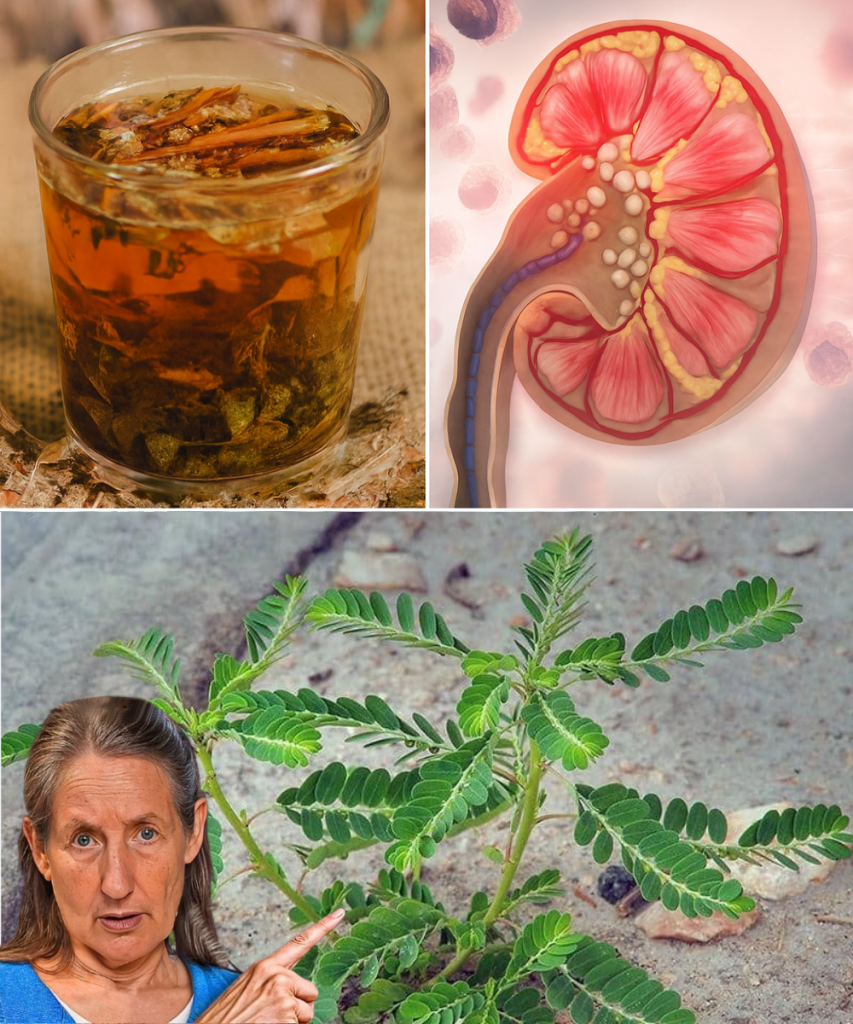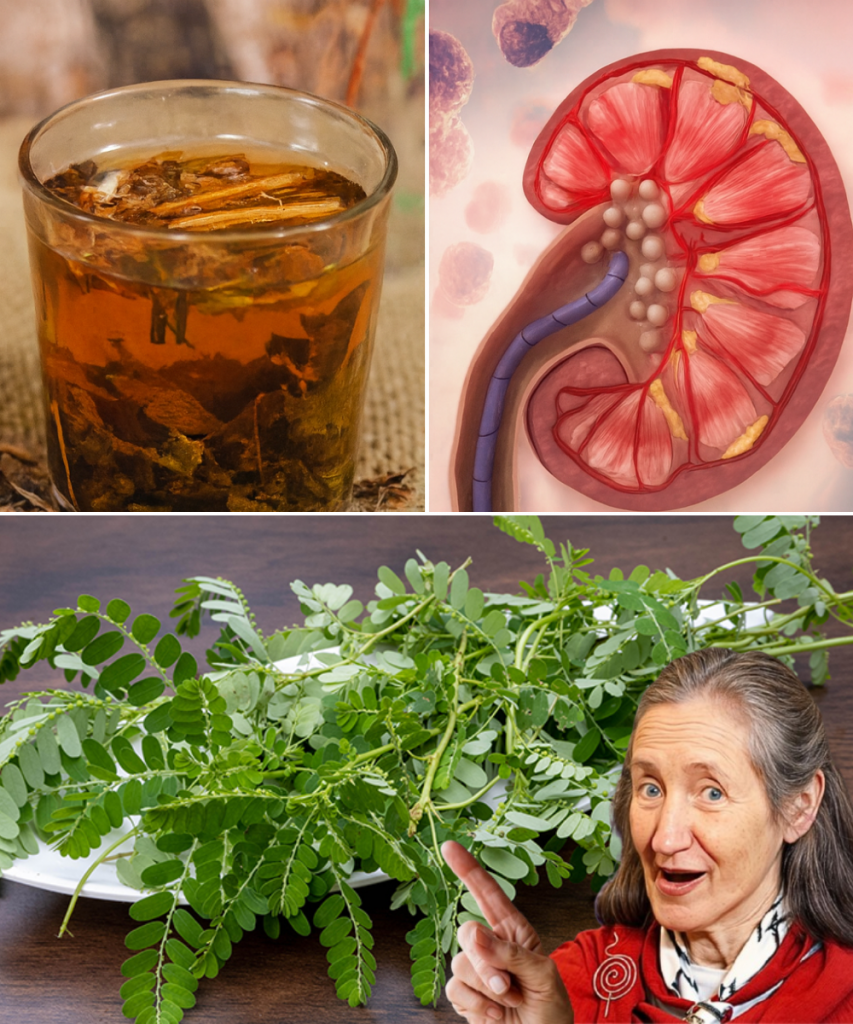Imagine a humble plant, barely knee-high, thriving in the wilds of tropical coasts, holding secrets that could transform your health. Phyllanthus niruri, often called the “stone breaker,” is no ordinary herb. For centuries, it has been revered in traditional medicine across the globe, from the ancient practices of Ayurveda in India to the healing rituals of South American tribes. This unassuming plant, with its delicate green leaves and tiny crimson-flushed flowers, is a powerhouse of wellness, promising relief from ailments as diverse as kidney stones, liver disorders, and viral infections. Curious? Let’s dive into the captivating world of Phyllanthus niruri and uncover why this tropical treasure deserves your attention.

🌱 What Is Phyllanthus Niruri?
Phyllanthus niruri is a small, annual herb that flourishes in tropical and subtropical regions, from the coastal plains of India to the rainforests of South America. Growing to a modest height of 50–70 cm, it boasts smooth, light green bark and ascending branches adorned with pale green flowers that often blush with hints of red. Its tiny, smooth capsules house seeds that have been used for generations in herbal remedies. Known by many names—chanca piedra, bhuiamlki, or gale of the wind—this plant’s global presence reflects its universal appeal in traditional healing systems.
What makes this herb so special? Its rich array of bioactive compounds, including flavonoids, lignans, tannins, and alkaloids, work together to deliver a spectrum of health benefits. From ancient healers to modern researchers, Phyllanthus niruri has sparked intrigue for its potential to address some of the most persistent health challenges.
💎 The Stone Breaker’s Claim to Fame: Kidney Stone Relief
Kidney stones are a painful reality for millions, affecting roughly 10–12% of people in industrialized nations. The agony of passing a stone or the dread of recurrence can be overwhelming. Enter Phyllanthus niruri, the “stone breaker,” a name earned through its remarkable ability to combat urinary tract stones.
This herb works its magic in multiple ways. It helps break down existing stones, reduces crystal aggregation, and alters the structure of stones to make them easier to pass. By promoting ureteral relaxation, it aids in flushing out stones or fragments after procedures like lithotripsy. Studies have shown that Phyllanthus niruri may also lower urinary levels of calcium, oxalate, and uric acid—key culprits in stone formation. For those battling recurrent stones, this plant offers a natural, gentle approach to prevention and relief, potentially sparing you from invasive treatments.
🛡️ A Guardian for Your Liver
Your liver is your body’s detox powerhouse, but modern lifestyles—think processed foods, stress, and environmental toxins—can take a toll. Phyllanthus niruri steps in as a fierce protector of this vital organ. In traditional systems like Ayurveda and Traditional Chinese Medicine, it has long been used to treat jaundice, hepatitis, and other liver ailments.
The herb’s hepatoprotective properties come from compounds like phyllanthin, hypophyllanthin, and geraniin, which shield liver cells from damage. Research suggests it can combat oxidative stress, reduce inflammation, and even protect against toxins like carbon tetrachloride. For those with chronic liver conditions, such as hepatitis B, Phyllanthus niruri shows promise in reducing viral markers, though more human studies are needed. Incorporating this herb into your wellness routine could be a game-changer for maintaining a healthy liver in a toxin-filled world.
🦠 Fighting Infections with Nature’s Arsenal
In a time when antimicrobial resistance is a growing global threat, Phyllanthus niruri emerges as a natural ally. Its extracts have demonstrated potent antibacterial and antiviral properties, targeting pathogens like Escherichia coli, Staphylococcus aureus, and even resistant strains like MRSA. The herb’s ability to inhibit bacterial growth makes it a candidate for addressing infections ranging from urinary tract issues to dysentery.
On the viral front, Phyllanthus niruri has shown intriguing potential against hepatitis B and HIV by blocking key enzymes needed for viral replication. While not a cure, its role in traditional medicine for treating infections like malaria and herpes underscores its versatility. For those seeking natural ways to boost immunity and combat infections, this herb offers a compelling option.
🔥 Anti-Inflammatory and Antioxidant Powerhouse
Chronic inflammation is at the root of many modern diseases, from arthritis to heart disease. Phyllanthus niruri steps up with its anti-inflammatory and antioxidant properties, driven by compounds like quercetin and gallic acid. These bioactive agents neutralize free radicals, reducing oxidative stress and calming inflammation throughout the body.
In animal studies, the herb has performed comparably to ibuprofen in reducing inflammation, offering a natural alternative for pain relief. Its antioxidant capabilities also support overall health, protecting cells from damage and potentially slowing the aging process. Whether you’re dealing with joint pain or simply want to bolster your body’s defenses, Phyllanthus niruri is a plant worth considering.
🩺 A Natural Ally for Blood Sugar and Heart Health
Diabetes and cardiovascular issues are on the rise, but Phyllanthus niruri may offer a natural way to manage these conditions. Studies in animals suggest that its extracts can lower fasting blood sugar, improve glucose tolerance, and even mimic insulin’s effects. By inhibiting enzymes involved in carbohydrate digestion, it helps prevent blood sugar spikes, making it a potential ally for those with type 2 diabetes.
For heart health, the herb’s hypolipidemic and cardioprotective properties shine. It can lower cholesterol and triglyceride levels, reducing the risk of atherosclerosis. Its ability to inhibit platelet aggregation may also support healthy blood flow, offering a holistic approach to cardiovascular wellness.
🎗️ Anticancer Potential: A Glimmer of Hope
Cancer remains one of humanity’s greatest challenges, and Phyllanthus niruri is stepping into the spotlight with promising anticancer properties. Its extracts have shown antiproliferative effects against various cancer cell lines, including breast, lung, and prostate cancers. The methylene chloride fraction of the plant, in particular, has demonstrated potent cytotoxicity against doxorubicin-resistant breast cancer cells, suggesting it could enhance the effectiveness of conventional treatments.
By modulating cell signaling pathways, Phyllanthus niruri may inhibit cancer cell growth while sparing healthy cells. While human studies are still in their infancy, the herb’s traditional use in cancer treatment and its early research results make it a fascinating subject for future exploration.
🌍 A Global Legacy of Healing
From the rainforests of Brazil to the herbal markets of India, Phyllanthus niruri has woven itself into the fabric of traditional medicine. In Ayurveda, it’s known as “bhuiamlki” and is prized for treating jaundice, diabetes, and urinary disorders. In South America, it’s called “chanca piedra” and is used as a diuretic and stone breaker. Across Africa and Asia, it’s a remedy for malaria, fever, and wounds.
This global legacy isn’t just folklore—modern science is catching up, validating many of these traditional uses. The plant’s versatility and accessibility make it a valuable resource, especially in regions where conventional medicines are scarce or costly.

🌿 How to Use Phyllanthus Niruri Safely
Ready to explore the benefits of Phyllanthus niruri? The herb is available in various forms, including teas, capsules, and powders. In traditional practices, it’s often consumed as an infusion or decoction made from dried leaves. Planet Ayurveda, for example, offers standardized extracts in capsule form for convenient use.
However, caution is key. While studies report no significant toxicity in animals, human responses can vary. Always consult a healthcare provider before adding Phyllanthus niruri to your routine, especially if you’re on medications or have pre-existing conditions. The lack of FDA regulation on herbal supplements means quality can vary, so choose reputable brands and check labels for purity.
🚀 Why Phyllanthus Niruri Deserves Your Attention
Phyllanthus niruri is more than just a plant—it’s a testament to nature’s ability to heal. Its ability to tackle kidney stones, protect the liver, fight infections, and reduce inflammation makes it a versatile ally in the quest for better health. As science continues to explore its potential, this humble herb could become a cornerstone of natural medicine.
Whether you’re seeking relief from a specific ailment or simply want to enhance your wellness routine, Phyllanthus niruri offers a natural, time-tested solution. Its global legacy and growing body of research make it a plant worth knowing—and perhaps incorporating into your life.
🌟 Embrace the Power of the Stone Breaker
The next time you hear about a small, unassuming herb growing in the wild, don’t underestimate it. Phyllanthus niruri, the stone breaker, is proof that big healing can come in small packages. From breaking down kidney stones to shielding your liver and fighting off infections, this plant is a natural marvel waiting to be explored. Dive into its world, consult with your doctor, and discover how this tropical treasure can support your journey to vibrant health. Isn’t it time you let nature’s hidden hero work its magic?









